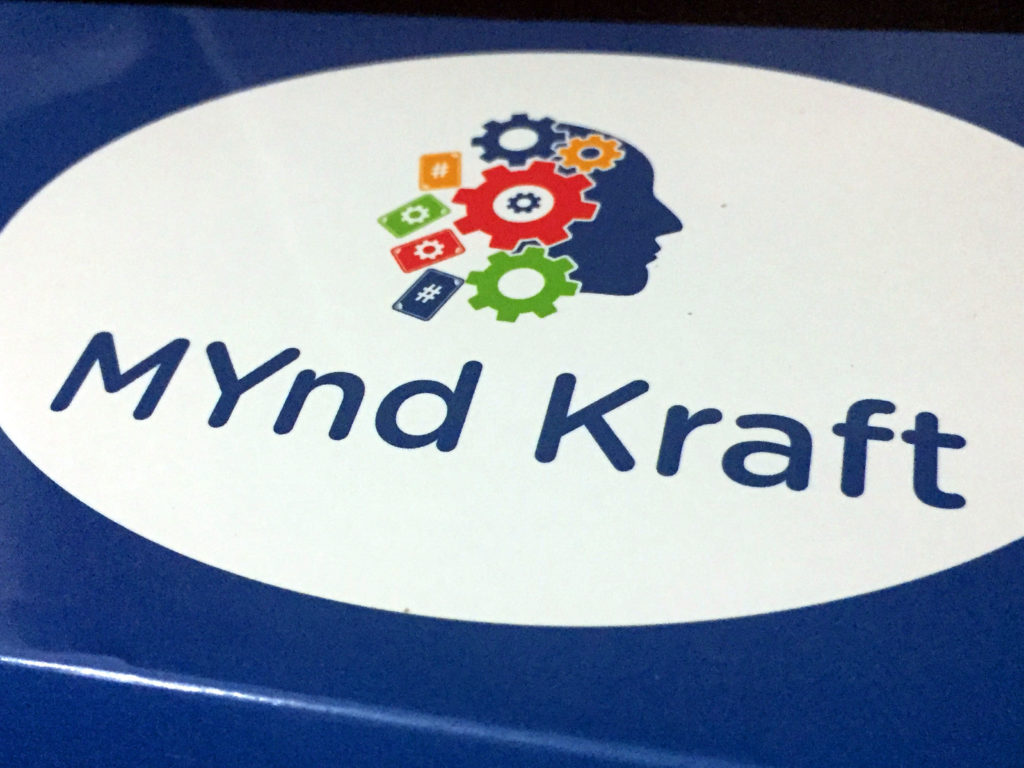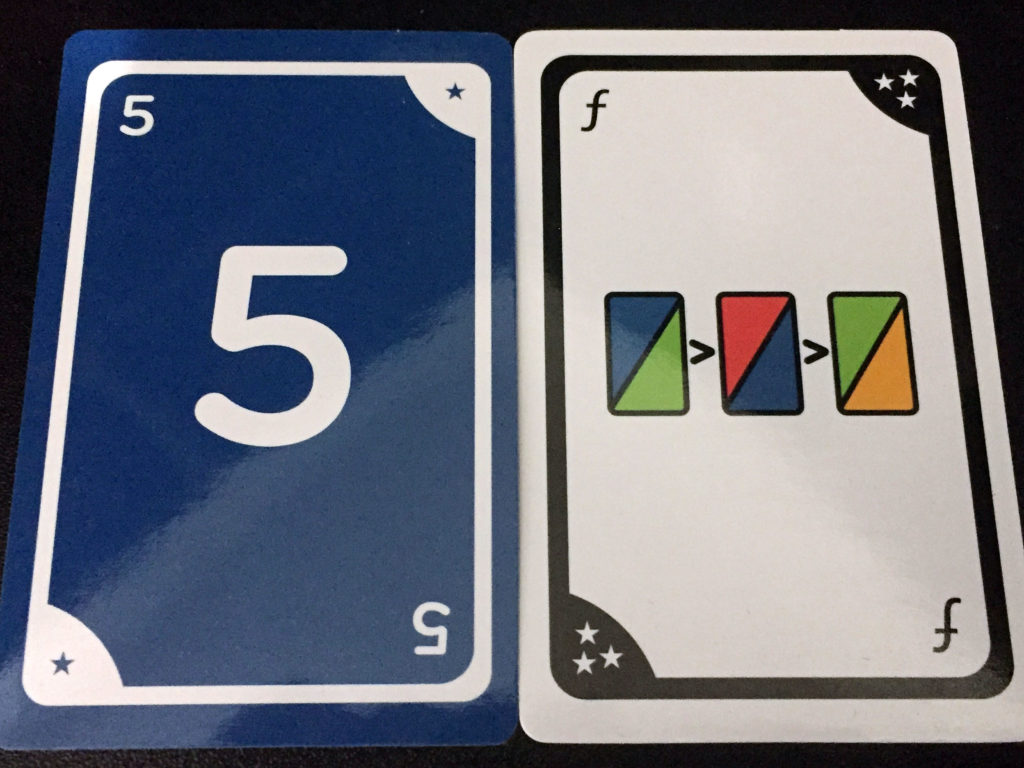There’s something to be said about the flexibility of playing with a deck of plain, old-fashioned cards. Sure, certain tabletop games can become the buzz word of the month, but they are often restricted by the rules set forth in the manual. “MYnd Kraft”, an upcoming Kickstarter project (8/27/18), is an example of the former…but these cards are anything but old-fashioned. One deck will give you access to seven (possibly more) unique games to play with your friends. Special thanks go to Game Creator Tharini Rajamohan for providing me with a prototype for preview purposes. It’s important to stress that prototypes are not often reflective of the final product, making everything you see and read about here subject to change. Per FCC Regulations I’m required to note that this article is sponsored, however my opinions are my own.

My prototype came with 36 Action Cards and 72 Number Cards (8 Asterisk & 64 Numbered Cards in four colors). Since there are seven different games available, I’ll choose to hi-lite one or two of them to give you a small taste. The rest you can discover on your own through the developer’s website. I highly recommend checking out the action card guide before playing so that you’re not confused by the symbols and shapes. Before we get to the nitty-gritty…it’s important to note that each card has a point value represented by stars in the upper right/bottom left corner of the card. The number of stars is equal to the number of points that card is worth.
—
EZY CODR: 2-6 Players, Ages 7+
The objective in EZR CODR is to score the highest number of points. To do that, players will use Number Cards to solve as many Action Cards as possible, one Action Card at a time. This game is meant as an introduction to some of the other games in the pack. Players randomly choose a face-down Number Card, flip them over, and whoever has the highest goes first.
To start, the Number and Action Card decks are shuffled separately and each player is dealt five Number Cards face down to form their hand. Play proceeds clockwise from the starting player.
On a player’s turn, they’ll draw an Action Card and play it face up for all to see in the center of the table. That same player will then try to use Number Card to solve the Action Card. If they can’t, the next player clockwise gets a chance, and so on. Once a player solves the Action Card, they keep it and the Number Cards that were played for scoring purposes. They also draw back up to five Number Cards. If no one can solve it, it goes to the bottom of the Action Card deck.
Players keep going until all possible plays have been made (usually when the cards start running out). Players then add the points of ALL the cards in their score pile…the highest wins!
—
MEMRY FLIPOTHON: 2-4 Players, Ages 7+
The objective in MEMRY FLIPOTHON is to have the highest score by using Number Cards to solve Action Cards, one at a time, like in EZY CODR. This game however focuses on accuracy and memory. Players randomly choose a face-down Number Card, flip them over, and whoever has the highest goes first.
To start, the Number and Action Card decks are shuffled separately and each player is dealt six Number Cards face down to form their hand. Then, deal ten Action Cards in two rows face down in the middle of the table. Play proceeds clockwise from the starting player.
On a player’s turn, they’ll turn over one of the Action Cards and try to use their Number Cards to solve it. If they can’t, their turn ends, the Action Card is flipped face down, and the next player goes. If an Action Card is solved, the player draws a new one face down to replace it and replenishes their hand to six Number Cards.
Players keep going until all possible plays have been made (usually when the cards start running out). Players then add the points of ALL the cards in their score pile…the highest wins!
—

The two above-mentioned games are of the easiest of the bunch. Some games, like CODR POKR MATCH, feature a larger 4-7 player count and have players use chips/candy/whatever to place bets. COBBLE THE CODE features 2-6 players but is accompanied by a ten page PDF manual and make for a more interesting/strategic game. DECODE is similarly strategic, but a tad less meaty. I did the worst with SPEEDY MONSTR…it’s essentially a variant of EZY CODR but there are no player turns. The person with the fastest & correct play of Number Cards wins the Action Card. Don’t get old, kids.
With that said, I really liked DECODE as it didn’t require as big of a player area as COBBLE THE CODE. In DECODE, there are four Action Cards that every player can lay face-down Number Cards to solve. Players then compare their Number Cards for that Action Card and the winner of that card is the person with the highest score across all four Action Cards. It’s possible to not lay down a card at all for one Action Card, but if your collective total on the other three are higher than the rest, then you win that round.
While my usual readers know by now that I don’t “review” prototypes, I will come out and say that I love the idea behind games like these. There is something here for everyone, whether you are a casual gamer, hardcore gamer, someone who likes to play in teams (CODR LEAGUE – TEAM), and etc. Play times are relatively short enough for games to be played on school nights and the variety of games available make it a plausible classroom activity. Creative individuals will no doubt be able to come up with their own games and variations, so I’d highly recommend a forum-like area on the developer’s website to where folks can easily share their ideas. My recommendation? Give “MYnd Kraft” a look…you won’t be sorry you did.
—
You can learn more about “Mynd Kraft” here:
Facebook: https://www.facebook.com/myndkraft/
Website: https://www.myndkraft.games/
Board Game Geek: https://www.boardgamegeek.com/boardgame/255263/mynd-kraft
—
